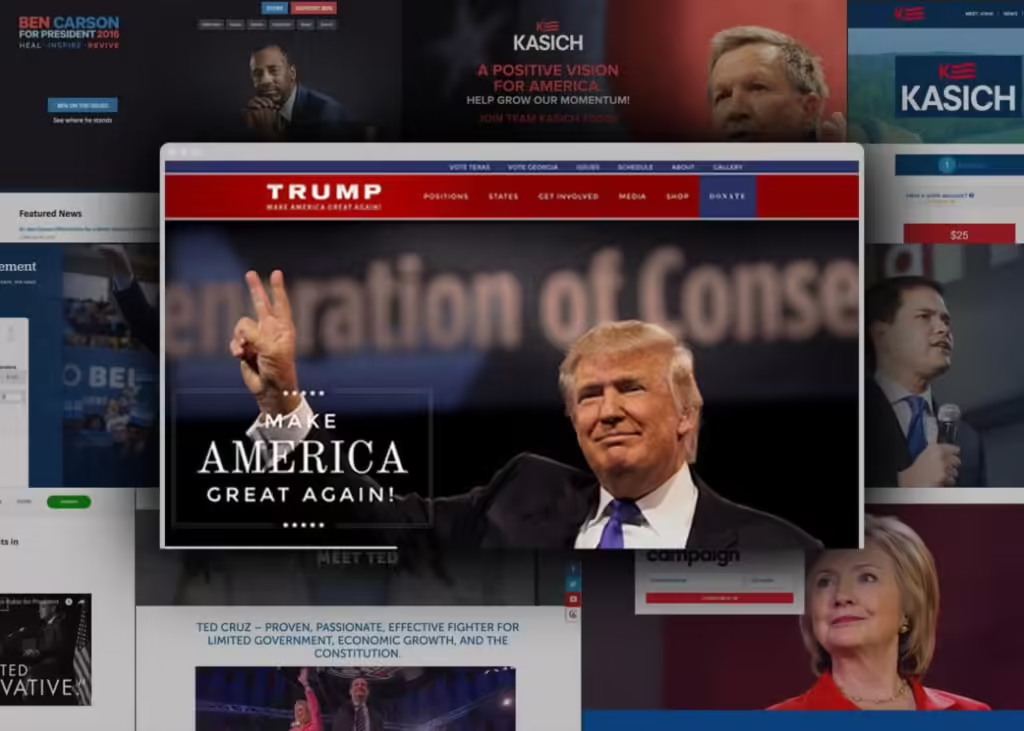Jumping into the wild world of political fundraising is a bit like diving headfirst into a shark tank—exciting, but filled with potential pitfalls. Whether you’re a seasoned candidate or just dipping your toes into the political waters, avoiding common fundraising mistakes is crucial for staying afloat and making a splash. From mismanaging donor relationships to neglecting the power of social media, the errors are many, but don’t worry—we’ve got your back!
In this guide, we’ll explore the top fundraising blunders and show you how to sidestep them like a pro. Ready to turn those political tides in your favor? Let’s dive in!
Common Fundraising Pitfalls
Overlooking Small Donors
One of the biggest mistakes in political fundraising is overlooking small donors. Sure, those high-dollar contributions can give your campaign a big boost, but small donors are the backbone of grassroots support. These are the folks who are often most passionate about your cause. They might not have deep pockets, but they can make up for it in numbers.

Plus, small donations can add up quickly and provide a steady stream of funding that can sustain your campaign over the long haul. More importantly, engaging small donors can turn them into enthusiastic advocates for your campaign, spreading the word and rallying their networks. So, don’t ignore the little guys. Treat every donor with the respect they deserve, and you’ll build a broad base of support that can make all the difference on election day.
Ignoring Compliance Laws
Ignoring compliance laws is a surefire way to derail your campaign. Political fundraising is regulated by a myriad of rules and regulations designed to ensure transparency and fairness. Whether it’s federal, state, or local laws, you must stay compliant to avoid hefty fines, legal trouble, or worse—public scandal. Missteps like accepting contributions that exceed legal limits or failing to report donations properly can tarnish your reputation and damage voter trust.

Moreover, non-compliance can lead to disqualification, putting an abrupt end to your campaign dreams. To avoid these pitfalls, invest in a good compliance team or software that keeps track of all contributions and expenditures. Regularly educate your staff and volunteers on the latest regulations. Staying compliant isn’t just about avoiding penalties; it’s about showing your commitment to ethical campaigning and maintaining the integrity of your political journey.
Neglecting Follow-Up
Neglecting follow-up is another common fundraising blunder that can cost you valuable support. Once a donor has contributed to your campaign, the relationship shouldn’t end there. A simple thank-you note, an update on how their contribution is making a difference, or an invitation to a campaign event can go a long way in building lasting relationships.

Donors who feel appreciated and informed are more likely to contribute again and become advocates for your cause. Additionally, follow-up communications can provide opportunities to gather feedback and understand donor expectations better. This ongoing engagement fosters loyalty and trust, making supporters feel like they are an integral part of your campaign. Remember, successful fundraising isn’t just about getting money—it’s about building a community of committed supporters who are in it for the long haul. So, never underestimate the power of a well-timed follow-up.
Building a Strong Donor Base
Engaging Local Support
Engaging local support is crucial for building a strong donor base. Your neighbors, community leaders, and local businesses are often the most enthusiastic backers of your campaign. They have a vested interest in the issues that affect their daily lives and are more likely to contribute their time, money, and resources to support a candidate who understands their needs. Start by attending community events, town hall meetings, and local gatherings to meet potential supporters face-to-face. Personal connections can significantly enhance your fundraising efforts. Additionally, consider collaborating with local businesses for fundraising events or sponsorships.

Local endorsements can add credibility to your campaign and attract further support. Use local media and social networks to spread your message and keep the community engaged. By fostering strong local ties, you’ll create a loyal base that not only funds your campaign but also rallies others to join your cause.

Partnering with a trusted data vendor is also an excellent way to get ahead of the curve. There are countless vendors at your disposal – however, a word of caution: don’t trust just anyone. Partner with a vendor that has a record of success and can provide you with insightful, actionable and accurate data for your campaign. Learn more about Redvail’s Political Data Services here.
Utilizing Social Media
Utilizing social media is an indispensable strategy for building a strong donor base. Platforms like Facebook, Twitter, and Instagram provide a direct line to potential supporters and donors. These channels allow you to share your campaign message, update followers on progress, and engage with the community in real-time.

Social media’s reach is vast, making it easier to connect with people who might not be accessible through traditional methods. Regular posts, live streams, and interactive content can keep your audience engaged and invested in your campaign. Additionally, social media advertising can target specific demographics, enhancing your fundraising efficiency. Crowdfunding campaigns on these platforms can also attract small donors who are passionate about your cause. Remember, the key to effective social media use is consistency and authenticity. Show your supporters that you’re not just a candidate but a real person with genuine commitments to the issues that matter.
Hosting Effective Events
Hosting effective events is key to energizing your donor base and drawing in new supporters. Events provide a unique opportunity for face-to-face interaction, allowing you to connect personally with your audience.
Whether it’s a formal dinner, a town hall meeting, or a casual coffee chat, the goal is to create an engaging atmosphere where attendees feel valued and heard. Plan your events around local issues that resonate with your community to ensure high turnout and interest.

Make sure to promote these events well in advance through various channels like social media, email newsletters, and local media. During the event, be approachable and ready to answer questions, and don’t forget to follow up with attendees afterward to keep the momentum going. Well-organized events not only boost fundraising efforts but also strengthen your support network, turning attendees into long-term advocates for your campaign.
Crafting the Perfect Pitch
Tailoring Your Message
Tailoring your message is essential for crafting a pitch that resonates with your audience. Different groups have different priorities, and a one-size-fits-all approach won’t cut it. Start by understanding the unique concerns and interests of your various donor segments.
For instance, small business owners might be more interested in economic policies, while young voters may be passionate about education or climate change. Customize your communications to address these specific issues, showing donors that you understand and care about what matters to them.

Use data and stories that are relevant to each audience to make your message more compelling. Personalization also extends to the medium—some donors might prefer detailed email updates, while others might engage more with social media posts or face-to-face conversations.
By tailoring your message, you create a more meaningful connection with your audience, increasing the likelihood of their continued support.
Highlighting Key Issues
Highlighting key issues is crucial for making your pitch stand out. Your donors need to know exactly what you stand for and why it matters.
Identify the top issues that resonate most with your target audience and make them the cornerstone of your messaging. Be clear and concise about your stance and how you plan to address these issues if elected. Use statistics, personal anecdotes, and real-world examples to illustrate the importance of these topics.

This not only builds credibility but also creates an emotional connection with your audience. Highlighting key issues helps to focus your campaign narrative, making it easier for supporters to understand and advocate for your cause.
Additionally, make sure to update your audience on any progress or developments related to these issues, keeping them engaged and informed. A well-defined focus on key issues can significantly enhance donor trust and support, driving your campaign forward.
Practicing Your Delivery
Practicing your delivery is a pivotal aspect of crafting the perfect pitch. No matter how well-tailored your message or how compelling your key issues are, a poor delivery can undermine your efforts. Start by rehearsing your pitch until it feels natural.
Practice speaking clearly and confidently, maintaining eye contact and using body language that conveys your passion and commitment. Record yourself to identify any areas for improvement, such as filler words or awkward pauses. Get feedback from trusted advisors or team members to refine your approach. Additionally, tailor your delivery to suit different formats—whether it’s a one-on-one conversation, a small group meeting, or a large public speech.

Remember, authenticity is key; donors are more likely to support a candidate who comes across as genuine and relatable. By honing your delivery, you ensure that your message not only reaches your audience but also resonates deeply, converting listeners into supporters.
Maximizing Online Fundraising
Effective Email Campaigns
Effective email campaigns are a cornerstone of online fundraising success. Start by building a robust email list through sign-ups on your website, social media, and at events. Personalize your emails to make each recipient feel valued, using their name and referencing their past support or interests. Craft compelling subject lines that grab attention and encourage opens.

Keep your message clear and concise, focusing on a single call-to-action—whether it’s making a donation, signing up for an event, or sharing a social media post. Use engaging visuals and stories to illustrate the impact of their support. Segment your email list to target different groups with tailored content. Regularly analyze your email metrics, such as open rates and click-through rates, to refine your strategy. Consistent and thoughtful email communication not only drives donations but also keeps your supporters engaged and informed, fostering a stronger connection to your campaign.

Optimizing Your Website
Optimizing your website is vital for maximizing online fundraising. Your website serves as the central hub for your campaign, so it needs to be user-friendly and visually appealing. Ensure that your donation page is easy to find and navigate, with a clear and compelling call-to-action.
Streamline the donation process to minimize friction—simpler forms and multiple payment options can significantly boost conversion rates. Use high-quality images and videos to tell your story and connect emotionally with visitors. Highlight key issues and achievements prominently to build credibility. Regularly update your content to keep it fresh and relevant. Additionally, make sure your website is mobile-friendly, as more people are accessing the internet on their phones.

Implement SEO best practices to improve your site’s visibility on search engines. By optimizing your website, you create a seamless experience that encourages visitors to support your campaign financially and stay engaged with your mission.
Leveraging Crowdfunding Platforms
Leveraging crowdfunding platforms can give your fundraising efforts a significant boost. These platforms, like GoFundMe or Kickstarter, provide a convenient way for supporters to contribute to your campaign.
Start by creating a compelling campaign page that clearly outlines your goals, the impact of their donations, and the urgency of your cause. Use engaging visuals and videos to capture attention and tell your story. Promote your crowdfunding campaign through your social media channels, email newsletters, and website to reach a wider audience.

Encourage your supporters to share the campaign with their networks, amplifying your reach. Regularly update your campaign page with progress reports and thank your donors publicly to maintain momentum. Crowdfunding platforms also offer tools to track donations and analyze performance, helping you refine your strategy. By effectively utilizing these platforms, you can tap into a broader base of small donors, driving more funds and engagement for your campaign.
Learning from Past Campaigns
Analyzing Successful Strategies
Analyzing successful strategies from past campaigns can provide invaluable insights for your current fundraising efforts. Start by reviewing campaigns similar to yours that have achieved their goals. What messaging did they use? How did they engage their supporters?
Pay attention to the channels they utilized, be it social media, email, or events, and note which ones were most effective. Look at their donor segmentation and how they tailored their messages to different groups. Also, examine the timing and frequency of their communications to understand the pacing that kept their audience engaged.

Don’t just focus on what worked; also take note of any challenges they faced and how they overcame them. By studying these successful strategies, you can identify best practices and innovative approaches that you can adapt and implement in your campaign.
Learning from the successes (and failures) of others helps you avoid common pitfalls and positions your campaign for success.
Avoiding Repeated Mistakes
Avoiding repeated mistakes is crucial for improving your campaign’s effectiveness over time. Start by conducting a thorough analysis of past campaigns to identify where things went wrong. Whether it’s mismanaging funds, ineffective messaging, or poor timing, understanding these mistakes is the first step to not repeating them. Document these issues and discuss them openly with your team to ensure everyone is on the same page.

Develop a clear action plan to address each identified problem, complete with measurable objectives and assigned responsibilities. Regularly review progress to ensure that corrective measures are being implemented effectively. Additionally, keep an eye on emerging trends and best practices in political fundraising to stay ahead of common pitfalls. By learning from past errors and adapting your strategies, you can avoid falling into the same traps.
This proactive approach not only improves your campaign’s efficiency but also builds a stronger, more resilient fundraising operation.
Implementing Feedback
Implementing feedback is essential for the continuous improvement of your campaign. Start by actively seeking feedback from donors, volunteers, and team members.
Use surveys, focus groups, and one-on-one conversations to gather their insights on what worked well and what could be improved. Be open to constructive criticism and view it as an opportunity for growth. Once you have collected feedback, prioritize the suggestions based on their potential impact and feasibility. Develop an action plan to address the most critical issues and set measurable goals to track your progress.

Make sure to communicate any changes or improvements to your supporters, showing them that their input is valued and acted upon. Regularly review the effectiveness of these changes and be prepared to make further adjustments as needed. By implementing feedback, you not only enhance your campaign’s effectiveness but also build stronger relationships with your supporters, fostering a collaborative and responsive campaign environment.




